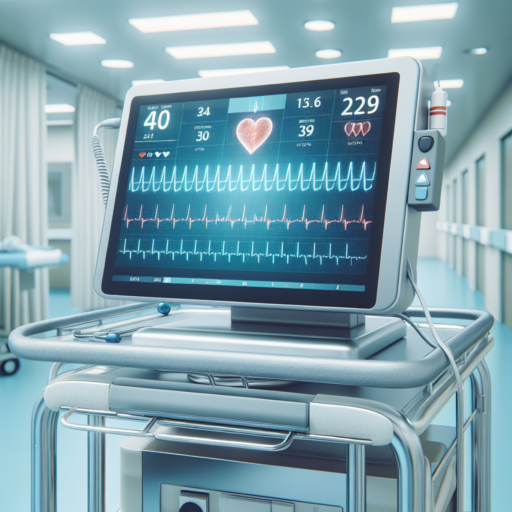Is there a watch that monitors heart arrhythmia?
In today’s rapidly advancing world of wearable technology, the question of whether there’s a watch that can monitor heart arrhythmia is more relevant than ever. Fortunately, the answer is a resounding yes. Watches designed with the capability to track heart rhythm and detect irregularities have become increasingly sophisticated, offering users not just the time, but potentially life-saving health monitoring features as well.
These devices utilize advanced sensors and algorithms to continuously monitor the electrical activity of the heart. By doing so, they are capable of identifying signs of atrial fibrillation (AFib) – a common type of heart arrhythmia that if left undetected and untreated, can lead to serious health complications. When irregular heart rhythms are detected, users are alerted, allowing them to seek medical advice promptly.
Manufacturers have geared towards making these smartwatches not only functional but also user-friendly and stylish. Among the leading brands, Apple and Fitbit stand out for their investment in heart health technologies. They offer watches equipped with ECG (electrocardiogram) apps that require just a few seconds to take a reading, providing users with real-time information about their heart rhythm.
How to check for heart arrhythmia at home?
Checking for a heart arrhythmia at home involves monitoring for irregular heartbeats or unusual symptoms that might indicate an irregular heartbeat. While home checks cannot replace professional medical evaluations, they can help individuals recognize potential signs of arrhythmia and seek timely medical advice.
Monitoring Your Pulse
- Locate your pulse on your wrist or neck.
- Use a watch or clock with a second hand, and count the number of beats in 60 seconds.
- Note any irregularity in your heartbeat’s rhythm: is it too fast, too slow, or irregular?
It’s crucial to understand that a normal heart rate ranges from 60 to 100 beats per minute when at rest. However, factors like emotions, activity levels, and physical health can influence your heart rate.
Using a Smart Device or Heart Rate Monitor
- Wearable technology, like fitness trackers, smartwatches, and heart rate monitors, can track your heart rate continuously.
- Some devices offer features that detect irregular heart rhythms and alert you.
- Review the collected data regularly to notice patterns or irregularities.
While these methods can help you monitor your heart’s rhythm at home, they do not diagnose heart arrayment. If you detect irregularities or experience symptoms such as dizziness, shortness of breath, or chest pain, it’s critical to seek professional medical advice immediately.
What is the best device to monitor heart rhythm?
Deciding on the best device to monitor heart rhythm depends on several factors including accuracy, ease of use, and the specific needs of the user. Among the plethora of devices available, smartwatches and dedicated heart rhythm monitors are the most popular choices. These devices are not only accessible but also offer a range of functionalities tailored to tracking heart health.
Smartwatches: A Versatile Choice
Smartwatches have emerged as a highly versatile option for monitoring heart rhythm on the go. Brands like Apple, Fitbit, and Garmin have incorporated advanced heart rate sensors and ECG functionalities into their wearables. These features allow for continuous heart rate monitoring, instant ECG readings, and even the detection of irregular heartbeats such as atrial fibrillation. The convenience of having a multifunctional device on your wrist makes smartwatches an attractive option for many.
Dedicated Heart Rhythm Monitors
For those seeking a more focused approach to heart rhythm monitoring, dedicated heart rhythm monitors are the go-to. Devices like the KardiaMobile by AliveCor and the Philips HeartStart Home AED offer precision and are designed specifically for heart health. These portable devices allow for easy self-monitoring, providing peace of mind for individuals with heart conditions or those at risk. Their capability to generate detailed reports that can be shared with healthcare professionals makes them indispensable for users requiring close monitoring.
While smartwatches offer convenience and an array of features, dedicated heart rhythm monitors provide unmatched accuracy and focus. The choice between them should be guided by the user’s lifestyle, health needs, and the level of detail required in their heart health monitoring regime. Understanding the nuances and benefits of each type of device is crucial in making an informed decision.
No se han encontrado productos.
What not to do while wearing a Holter monitor?
When prescribed a Holter monitor by a healthcare professional, it’s crucial to understand that this device is continuously recording your heart’s rhythms over a certain period, typically 24 to 48 hours, or sometimes even longer. During this time, maintaining the device’s integrity and ensuring accurate recording involves avoiding a set of activities that could interfere with its functionality. Below, we provide guidance on the key activities you should sidestep to guarantee the reliability of your test results.
Avoid Water and High Moisture Activities
First and foremost, it is critical to protect the Holter monitor from water and excessive moisture. This means no showering, bathing, swimming, or participating in activities that cause excessive sweating during the monitoring period. These actions can damage the equipment or dislodge the electrodes, compromising the accuracy of the heart rhythm recordings.
Steer Clear of Electronic Interference
Another important consideration is to avoid close proximity to high-powered electronics or magnets. Devices such as microwaves, metal detectors, and powerful electrical tools can interfere with the Holter monitor’s recordings, leading to potential misreadings. While day-to-day electronic devices like smartphones and computers are typically safe to use, ensure they are kept at a reasonable distance from the monitor to prevent any possible disruptions.
Maintain Normal Daily Activities with Caution
Lastly, while it’s recommended to engage in your usual daily activities to provide a representative heart rhythm sample, certain limitations apply. Avoid intense physical activity or sports that could lead to the electrodes becoming loose or the device getting damaged. Mild to moderate physical activities should be fine, but it’s always best to consult with your healthcare provider for specific advice tailored to your situation.


